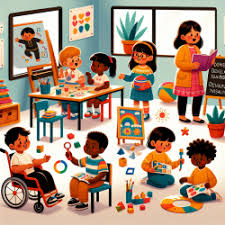Introduction
In the wake of disasters, children are often the most vulnerable, facing significant mental health challenges. The research article "Child Disaster Mental Health Interventions, Part II" provides a comprehensive review of interventions aimed at mitigating these challenges. This blog will explore key findings from the study, offering practitioners actionable insights to improve their intervention strategies.
Timing of Interventions
The timing of intervention delivery is crucial. The study highlights that interventions can be effective at various stages, from pre-event preparedness to long-term recovery. Practitioners should consider the specific needs of children at each stage:
- Pre-Event: Implement preparedness programs to build resilience in children, especially in high-risk areas.
- Early Aftermath: Focus on support and stabilization, though be cautious with debriefing interventions as they may not always be beneficial.
- Recovery Period: Interventions can still be effective months or even years after a disaster, particularly for children with ongoing symptoms.
Delivery Settings
The setting of interventions plays a significant role in their effectiveness. Schools are highlighted as a primary venue due to their accessibility and the established relationships between teachers and students. However, clinical settings and community sites like shelters can also be utilized depending on the situation:
- School Settings: Ideal for public health activities and psychoeducation due to the large number of children that can be reached.
- Clinical Settings: Suitable for more intensive interventions requiring mental health professionals.
- Community Settings: Necessary in disaster-stricken areas where traditional venues are unavailable.
Therapeutic Approaches
Interventions vary in format, from individual to group sessions, and may involve parents. The study suggests that while both individual and group interventions are effective, group sessions offer advantages in terms of efficiency and social support. Parent involvement is also beneficial, enhancing the therapeutic process and supporting the child's recovery.
Encouraging Further Research
While current interventions show promise, there is a need for further research to optimize strategies. Practitioners are encouraged to explore the following areas:
- Comparative studies on the timing of interventions across different disaster phases.
- Evaluation of the effectiveness of parent involvement in interventions.
- Innovative approaches to delivering interventions in diverse settings.
By integrating these evidence-based insights, practitioners can enhance their skills and improve outcomes for children affected by disasters. For a more in-depth understanding, practitioners are encouraged to delve into the original research paper.
To read the original research paper, please follow this link: Child disaster mental health interventions, part II.










